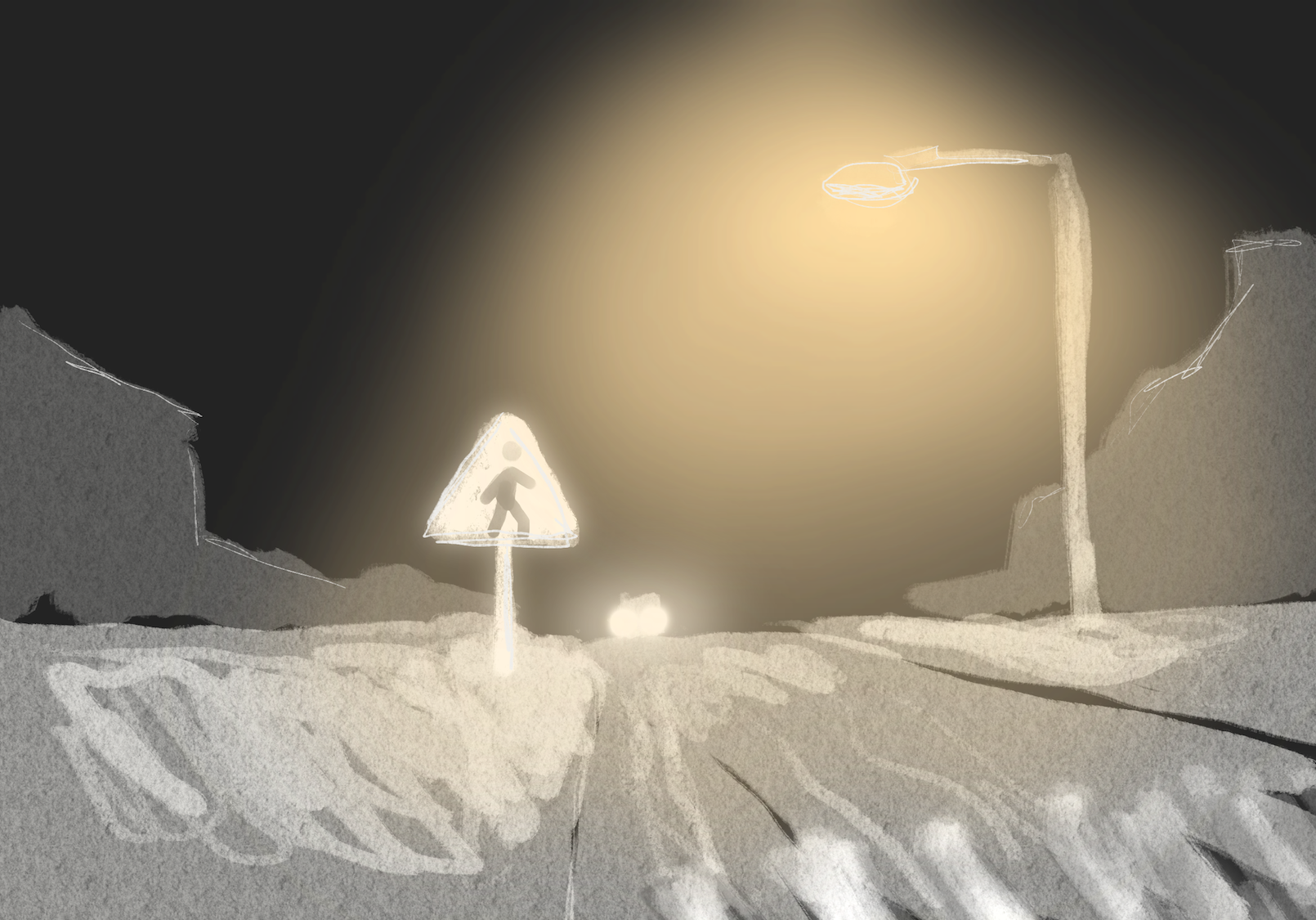Does the name Shingo Matsumoto mean anything to you?
November 4, 2022
 This
piece represents the opinion of the author
.
This
piece represents the opinion of the author
.
 Kyra Tan
Kyra TanIt happened on a cold December night in 1995. A twenty-one-year-old Bowdoin student had just left Helmreich House and was crossing Maine Street when a truck accidentally ran him down, killing him. That student was Shingo Matsumoto, and we would do well to remember his name and how he died.
Like Shingo, hundreds of Bowdoin community members cross busy streets on and near campus countless times a day. Over the years, too many have been injured in motor vehicle-pedestrian or bicycle collisions.
In the past month alone, two of our students on bicycles collided with motor vehicles, and a car struck a faculty member in a crosswalk. The faculty member and a student sustained multiple injuries.
Near misses occur nearly every day. We’ve all seen or experienced them many times, and they are terrifying for all involved. Life or death is sometimes determined by a split second of reaction time or pure luck.
In an ultra-connected world, our attention is often divided by text messages or blasting music that blocks the sounds that warn us of impending danger.
The Maine Bureau of Highway Safety reports that pedestrian fatalities have risen sharply over the past five years. In Maine, a pedestrian is struck by a motor vehicle every thirty hours, and more than ninety percent of these crashes involve injury or death.
Did you know that in Maine, people between the ages of 15 and 24 account for a quarter of all pedestrian crash victims, Friday is the most dangerous day of the week for pedestrians and most collisions involving pedestrians occur from 4:00 to 6:00 p.m.?
Daylight savings time ends at 2:00 a.m. on Sunday, when we’ll turn our clocks back one hour. With less daylight and reduced visibility at high traffic times, think about the increased risks pedestrians, bicyclists and drivers will face when negotiating the frenetic streets around town and campus.
As drivers of machines that can maim and kill, it is our constant duty to be hyper-cautious and prepared to react to avoid crashes that have life-changing consequences for everyone involved.
As pedestrians, it is our responsibility to pause and ensure it is safe to cross. Use clearly marked crosswalks and activate the flashing warning lights when available. These lights have proved to be effective at stopping traffic and reducing the number and severity of crosswalk crashes—but never trust that drivers can or will stop for you; a driver could be distracted, drunk, drugged or just plain reckless.
Although pedestrians have the right-of-way in a crosswalk, that does not mean they have been granted a special privilege to enter a roadway at will. Drivers cannot stop or yield unless they see you. Before crossing, make eye contact with the driver and reach an understanding of each other’s intentions—an acknowledgement that we are going to make this transaction happen safely. It’s a contract or pact of sorts.
The law is clear that pedestrians “may not suddenly leave a curb or other place of safety and walk or run into the path of a vehicle that is so close that it is impossible for the operator to yield.” The law also states that drivers “shall operate a vehicle at a careful and prudent speed” given all existing conditions.
After a crash, drivers often claim they did not see the people in the road in time to avoid hitting them. Almost always a crash could have been avoided if the driver, pedestrian or bicyclist had been more cautious, courteous or aware.
Bicyclists have many of the same obligations as motor vehicle operators. Bike riders are not pedestrians. They must yield before entering a way, cede to pedestrians in crosswalks, obey traffic control devices, signal their intentions, use lights and reflectors at night and operate on roadways with the flow and direction of traffic—staying as far to the right as practicable. Also, drivers overtaking bikes are required to pass with a minimum of three feet clearance.
On walkways and sidewalks, people riding bikes, scooters and longboards have an obligation to yield to pedestrians, operate at a prudent speed and give an audible warning when approaching, especially from behind.
Everyone complains about the other guy—oblivious pedestrians, darting bicyclists, crazy drivers. The fact remains that we have little to no control over what other people do. We can only control what we do and how we react to situations.
Expect that at any moment on any day a sudden, life-threatening situation could present itself. Will we be ready to respond when that inevitable moment comes?
Today Shingo would have been a 48-year-old alumnus in the prime of life. Perhaps the knowledge of his needless loss of life will raise our awareness just a little, and that may be all it takes to avert tragedy in our own lives. For Shingo, that would be a worthy legacy, indeed.

Comments
Before submitting a comment, please review our comment policy. Some key points from the policy: